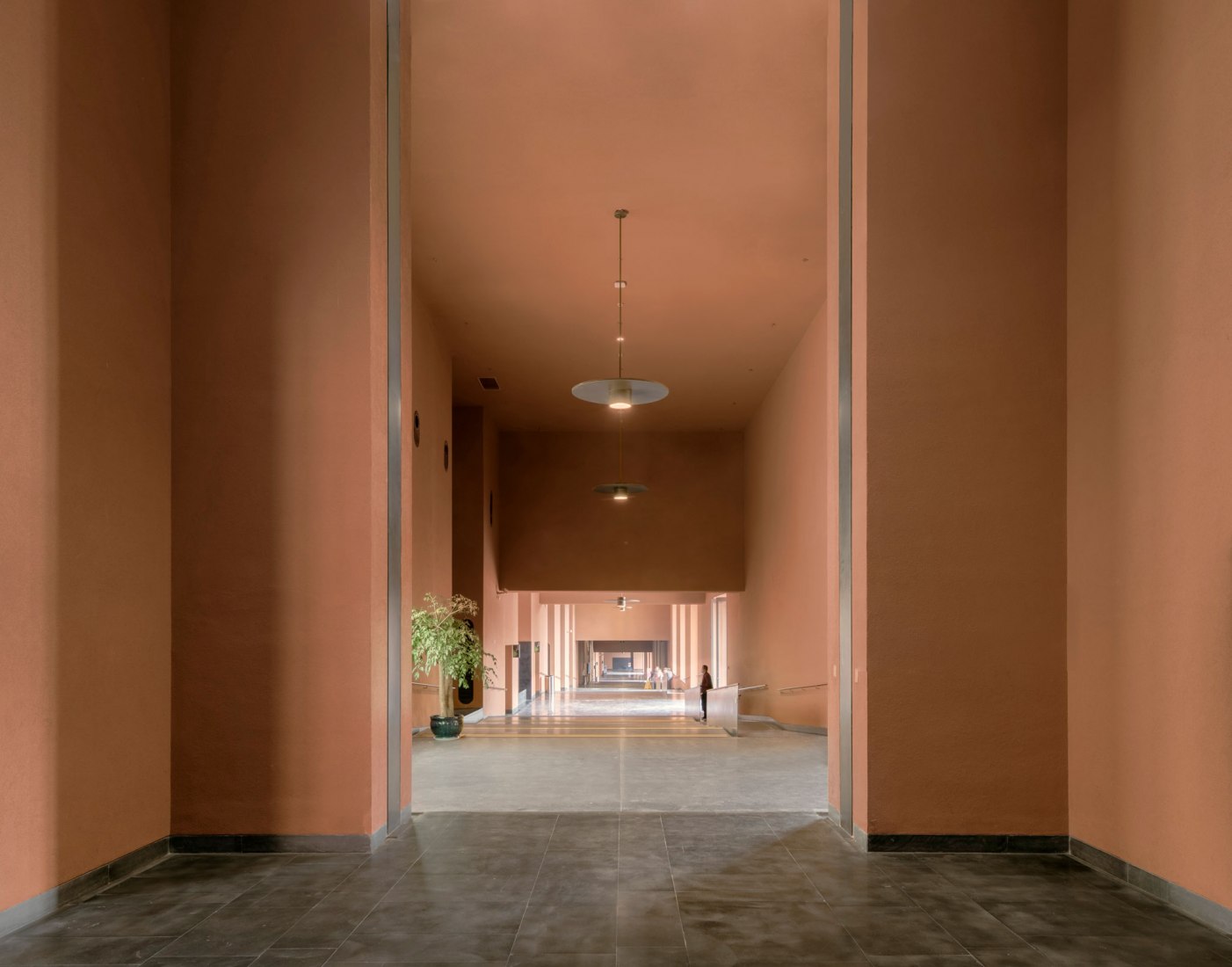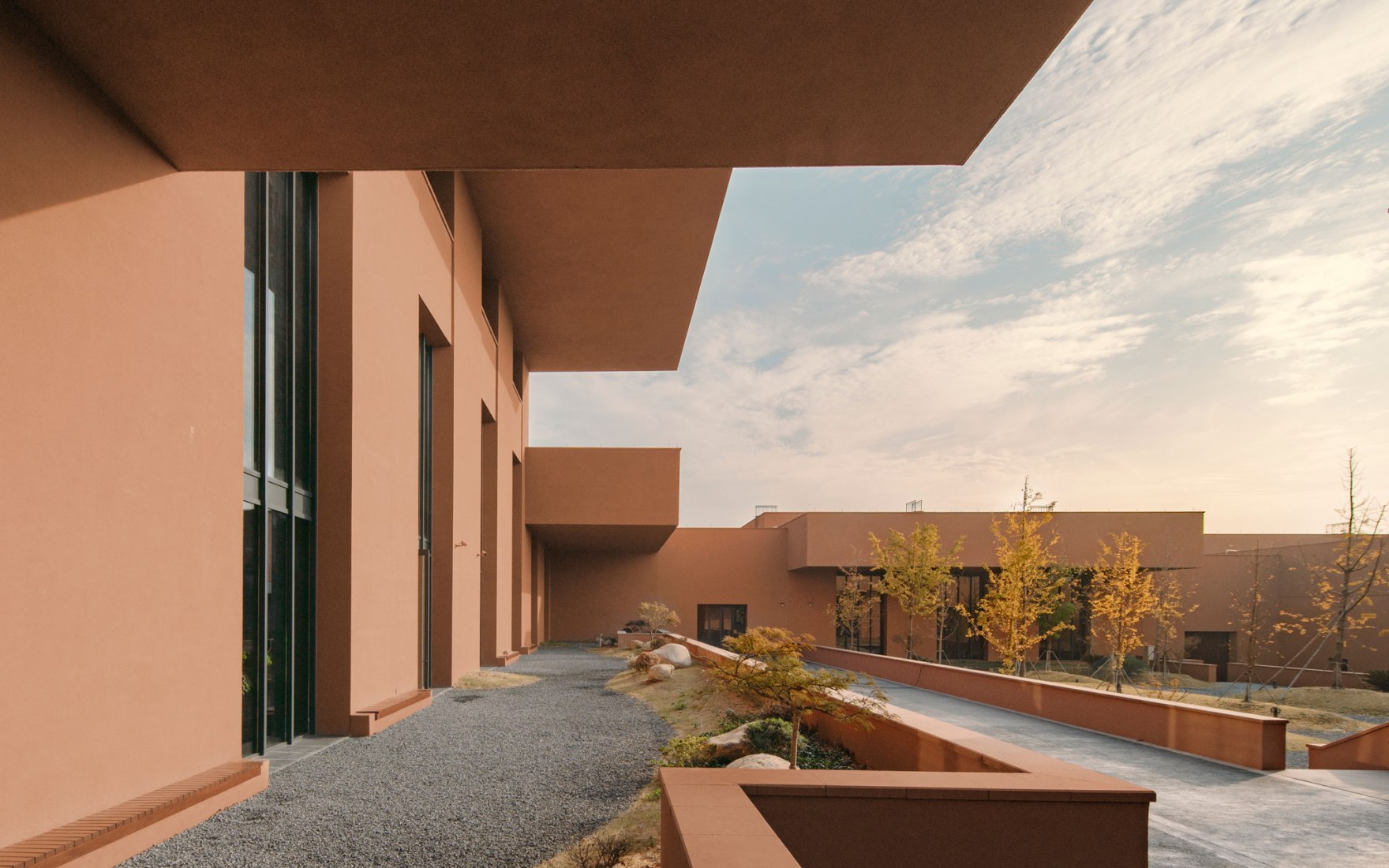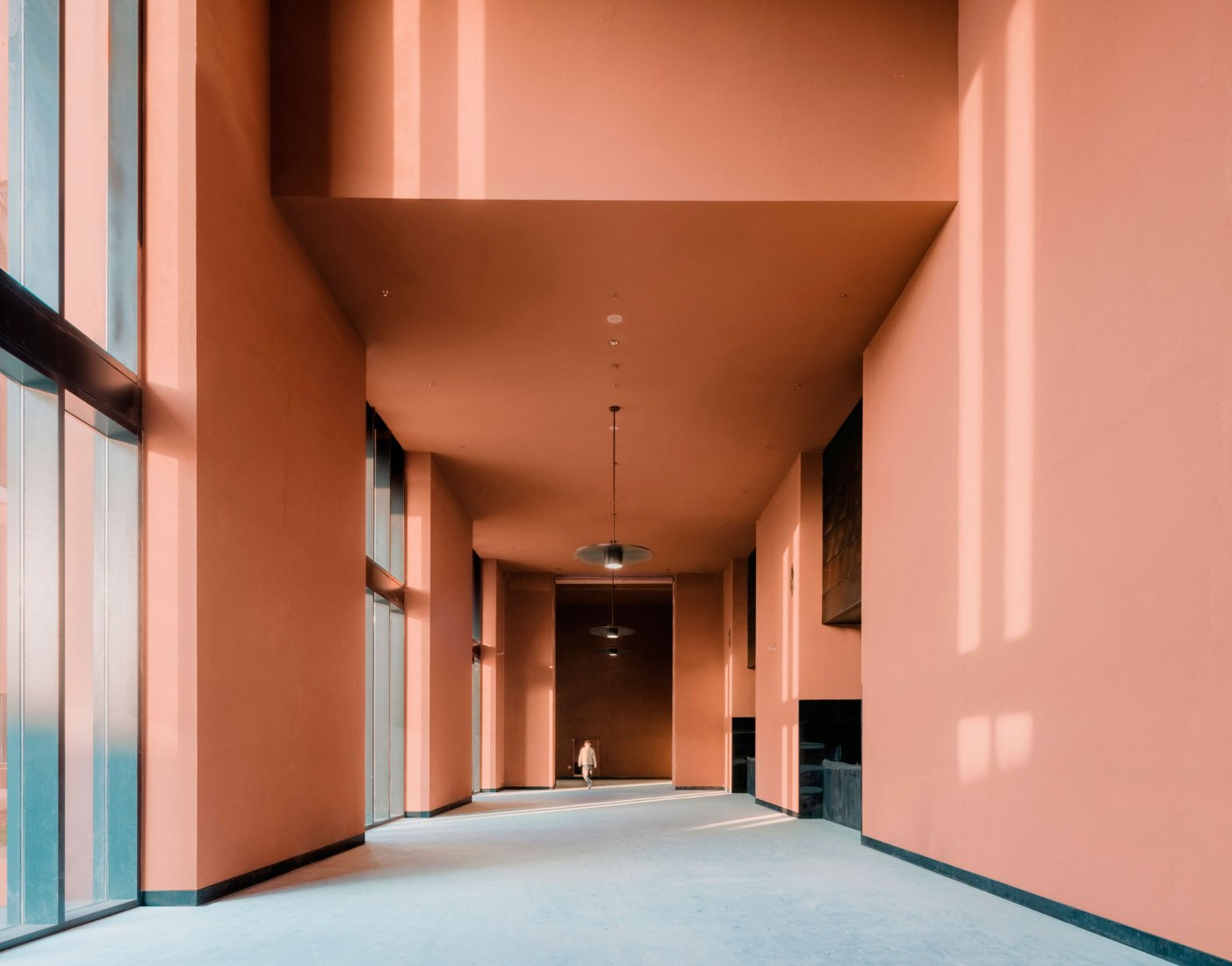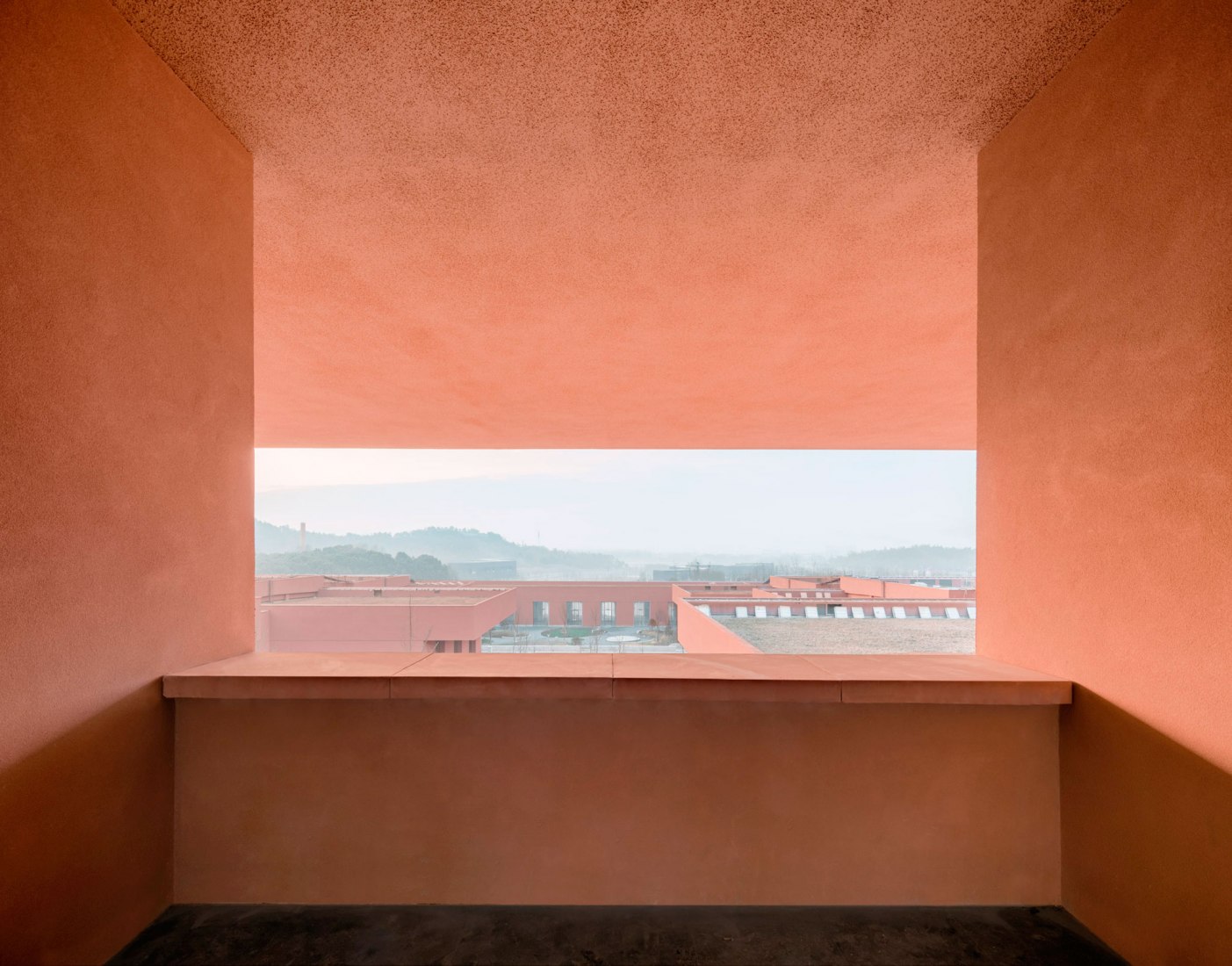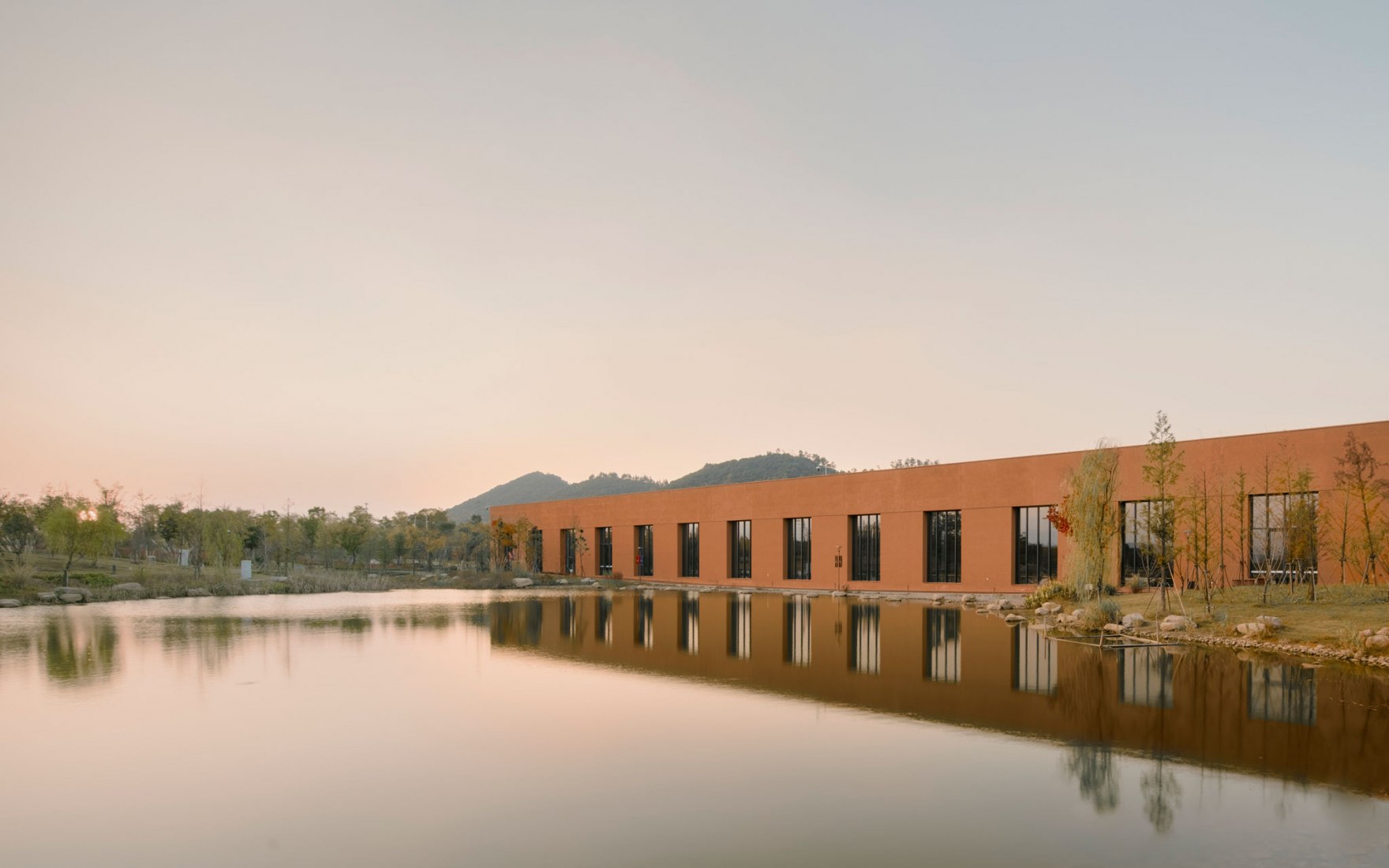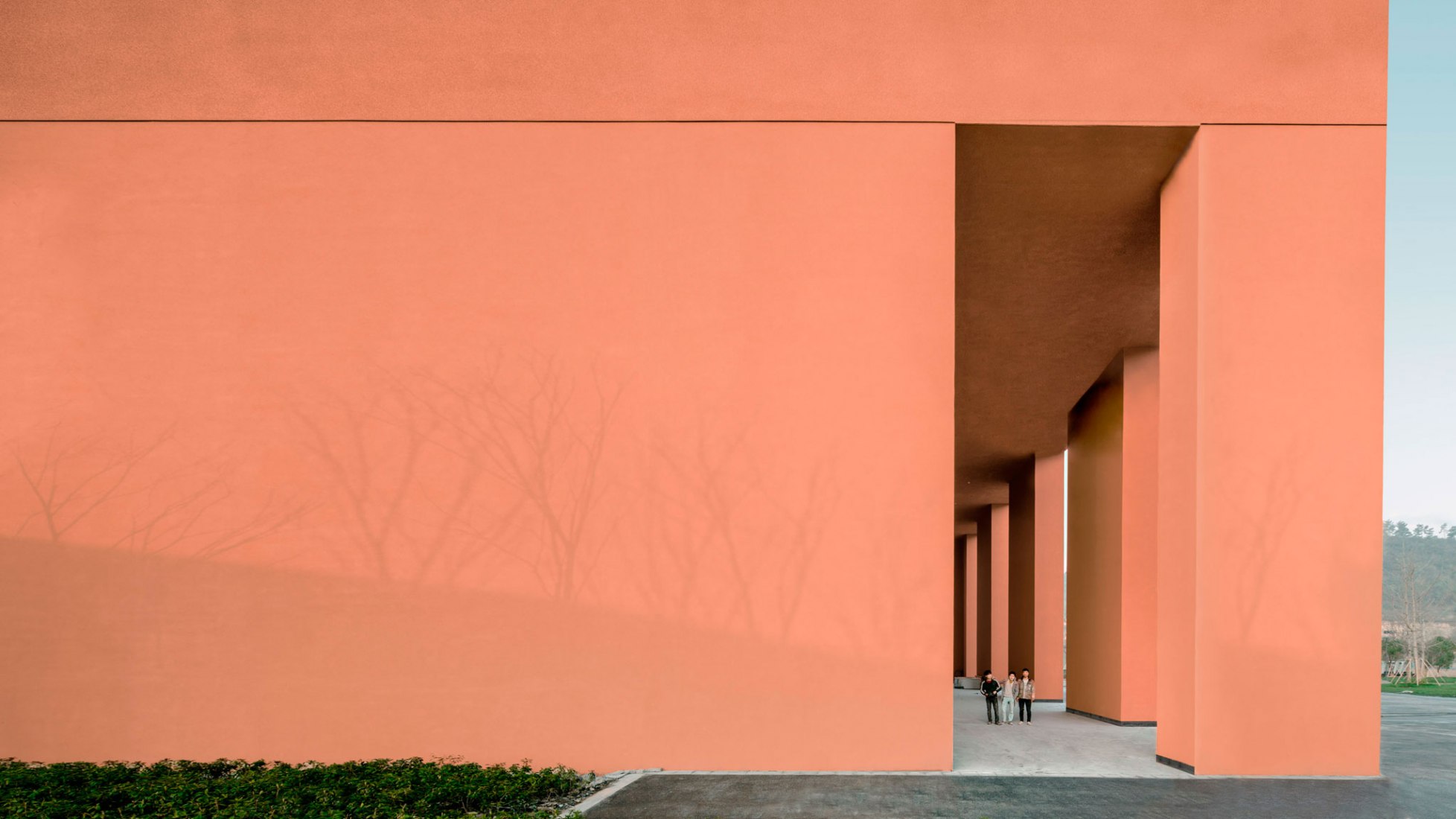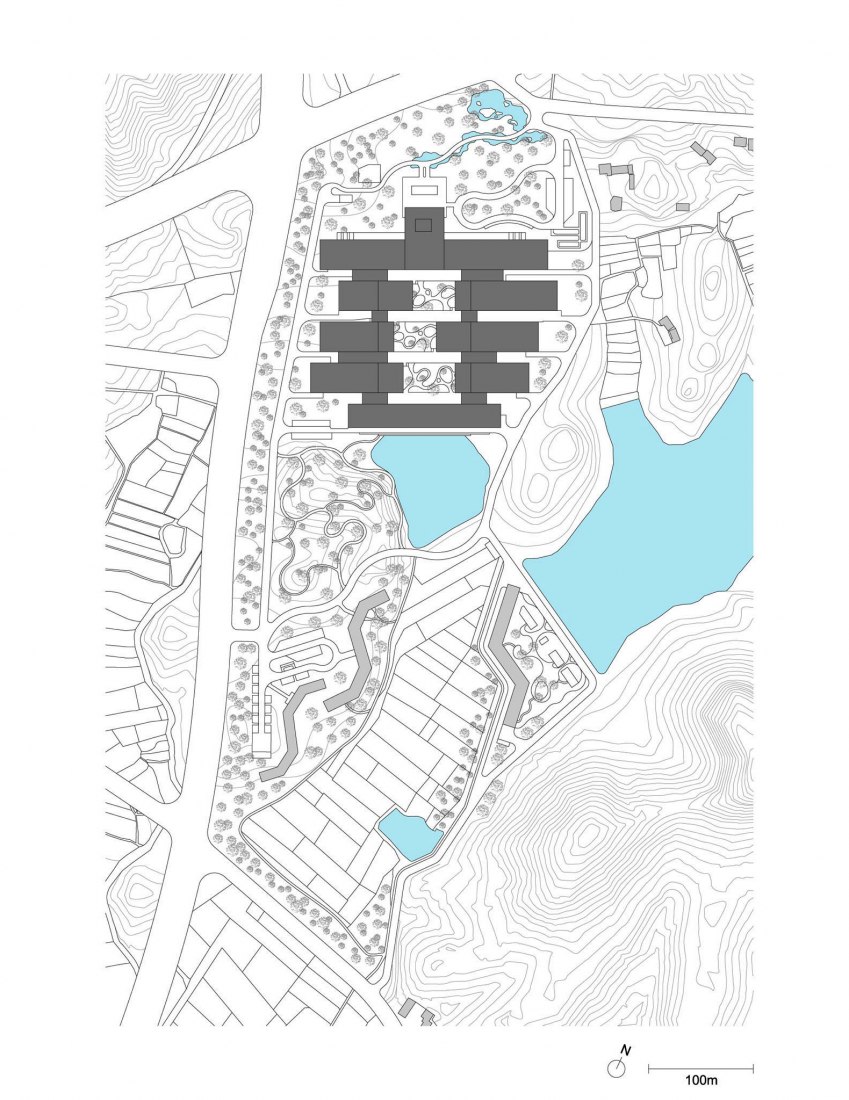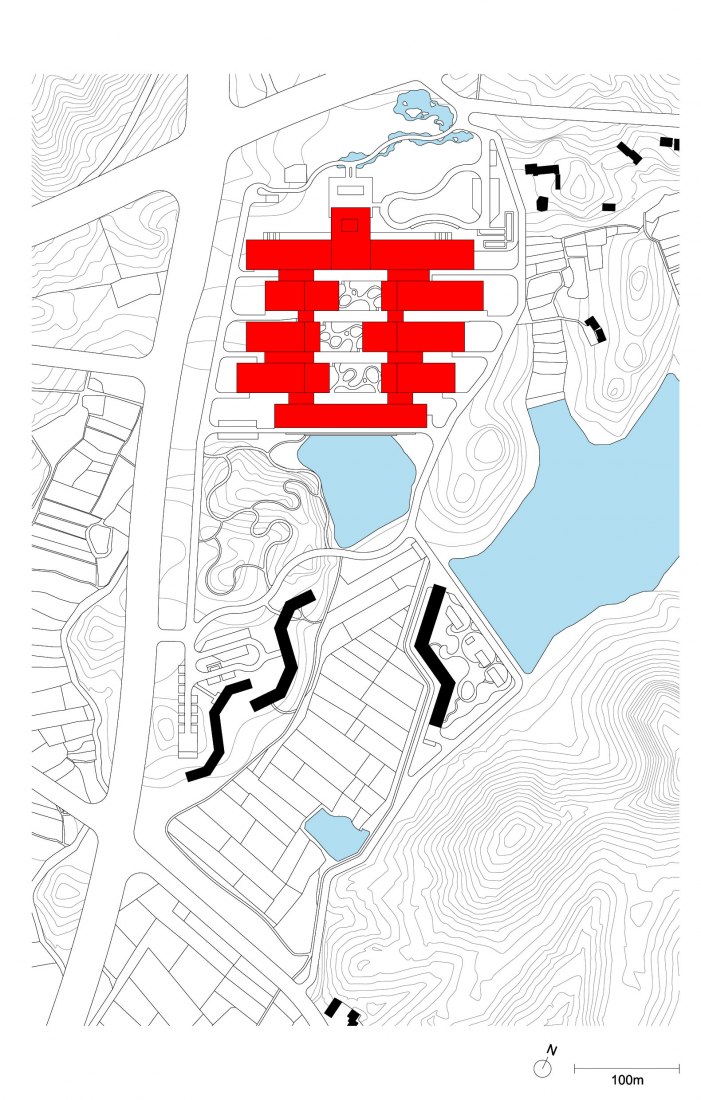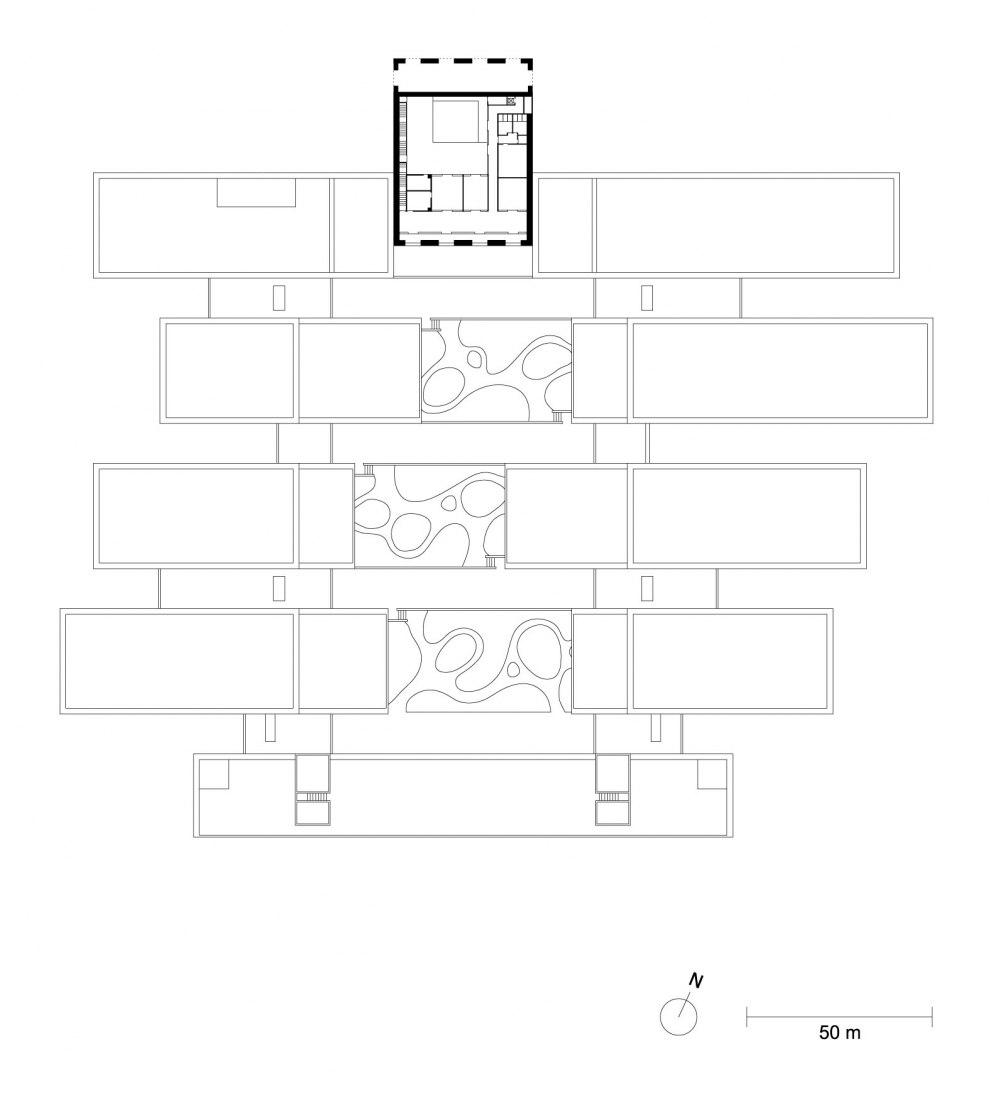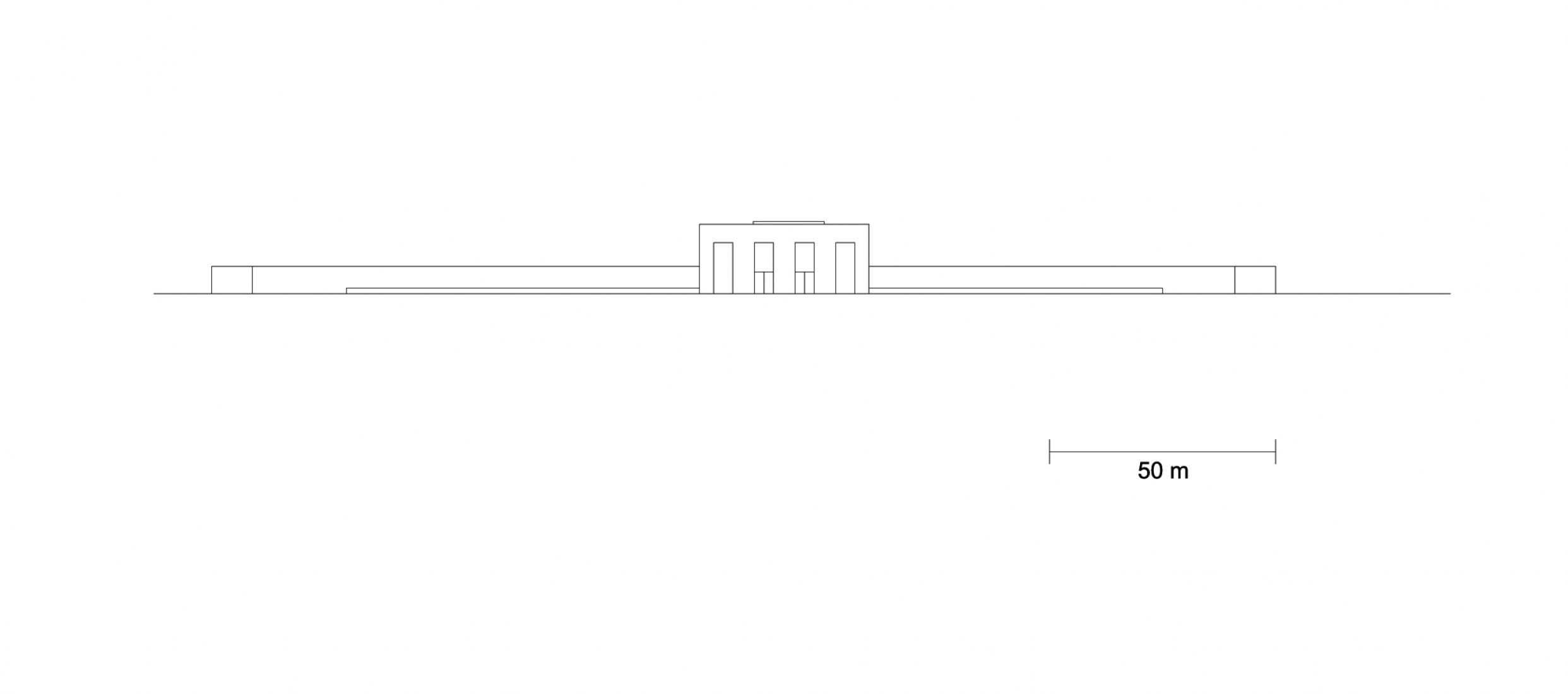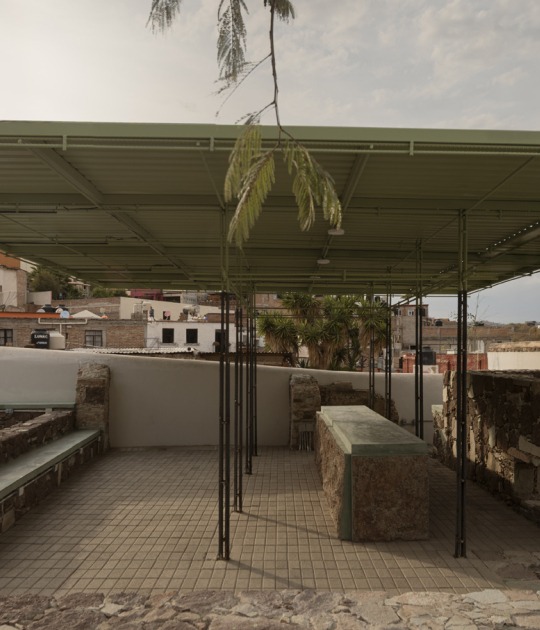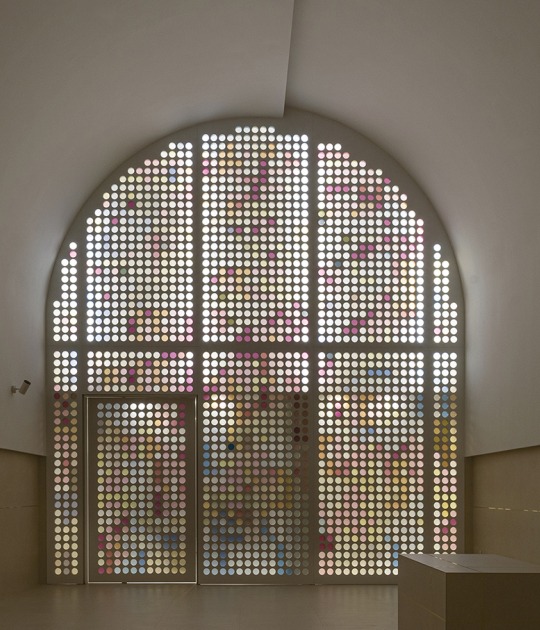The museum of 58,000 m², comprises eight interior spaces, designed by David Chipperfield Architects, which adapt to the slope topography of Anji County, through staggered perpendicular trays that communicate the interior of the museum with the landscape of the exterior natural park , until you reach the lagoon located south of the park.
Description of project by David Chipperfield Architects
Founded in 1929, the Zhejiang Museum of Natural History is located in Hangzhou and has a collection of over 200,000 specimens covering geology, ecology and palaeontology. The eastern Chinese province of Zhejiang is the site of many important discoveries from the Cretaceous period. A new, second branch of the museum has been established in Anji, in the north of the region, forming the centrepiece of a new cultural district.
The new museum is set on a sloping site in a large natural park surrounded by bamboo forests and overlooking rice fields in the valley below. It comprises a loose infrastructure of spacious exhibition halls, taking into account the large scale of some of the exhibits: Dinosaur fossils and life-size models, large-scale wildlife dioramas, accompanied by multimedia and interactive exhibition elements.
The staggered composition of the eight, single storey, bar-shaped pavilions step down the hillside. They follow the natural topography, minimising the visual impact on the landscape, and frame an open garden. A loggia, or covered walkway, loops around this central space, mediating between the external and internal areas of the museum.
At the northernmost point, an entrance pavilion welcomes visitors and offers views over the central garden and landscape beyond. Located on either side of the garden, each exhibition hall can be accessed directly or in sequence following the stepped loggia. The southernmost pavilion faces out towards a lake at the lowest end of the site.
The solid forms of the pavilions are embedded within the dense landscaping of the central garden and the surrounding parkland. The planting extends onto the green roofs of the building complex which is rendered in red ochre to match the clay earth of the hillside site, reinforcing the relationship between the museum and the landscape.



